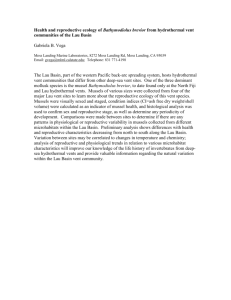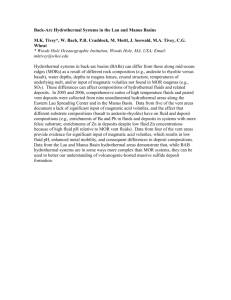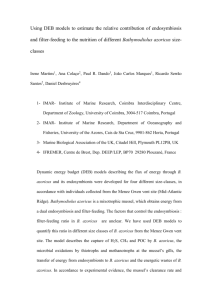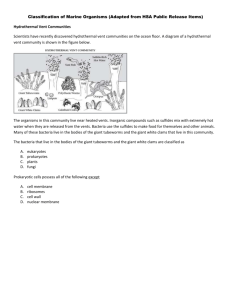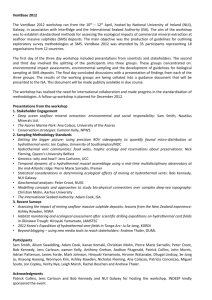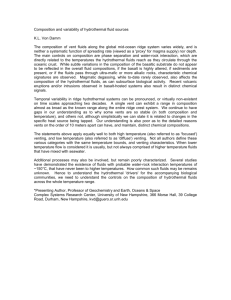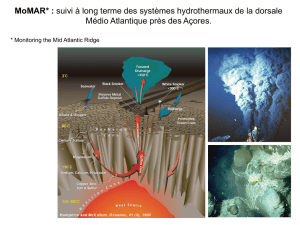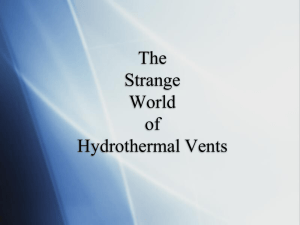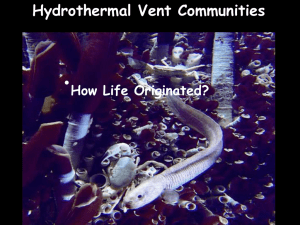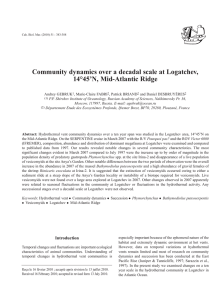Supplement
advertisement
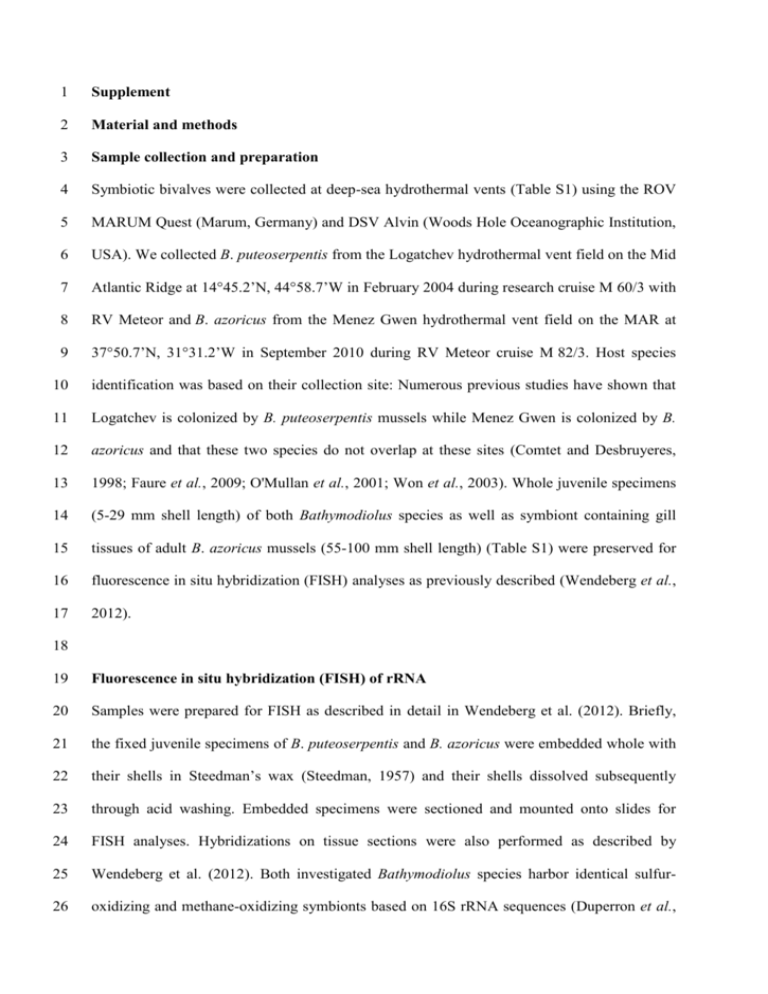
1 Supplement 2 Material and methods 3 Sample collection and preparation 4 Symbiotic bivalves were collected at deep-sea hydrothermal vents (Table S1) using the ROV 5 MARUM Quest (Marum, Germany) and DSV Alvin (Woods Hole Oceanographic Institution, 6 USA). We collected B. puteoserpentis from the Logatchev hydrothermal vent field on the Mid 7 Atlantic Ridge at 14°45.2’N, 44°58.7’W in February 2004 during research cruise M 60/3 with 8 RV Meteor and B. azoricus from the Menez Gwen hydrothermal vent field on the MAR at 9 37°50.7’N, 31°31.2’W in September 2010 during RV Meteor cruise M 82/3. Host species 10 identification was based on their collection site: Numerous previous studies have shown that 11 Logatchev is colonized by B. puteoserpentis mussels while Menez Gwen is colonized by B. 12 azoricus and that these two species do not overlap at these sites (Comtet and Desbruyeres, 13 1998; Faure et al., 2009; O'Mullan et al., 2001; Won et al., 2003). Whole juvenile specimens 14 (5-29 mm shell length) of both Bathymodiolus species as well as symbiont containing gill 15 tissues of adult B. azoricus mussels (55-100 mm shell length) (Table S1) were preserved for 16 fluorescence in situ hybridization (FISH) analyses as previously described (Wendeberg et al., 17 2012). 18 19 Fluorescence in situ hybridization (FISH) of rRNA 20 Samples were prepared for FISH as described in detail in Wendeberg et al. (2012). Briefly, 21 the fixed juvenile specimens of B. puteoserpentis and B. azoricus were embedded whole with 22 their shells in Steedman’s wax (Steedman, 1957) and their shells dissolved subsequently 23 through acid washing. Embedded specimens were sectioned and mounted onto slides for 24 FISH analyses. Hybridizations on tissue sections were also performed as described by 25 Wendeberg et al. (2012). Both investigated Bathymodiolus species harbor identical sulfur- 26 oxidizing and methane-oxidizing symbionts based on 16S rRNA sequences (Duperron et al., 27 2006). Therefore we used probe BNMAR_193_thio (5’-CGA AGG TCC TCC ACT TTA-3’) 28 targeting the sulfur oxidizer and probe BNMAR_845_meth (5’-GCT CCG CCA CTA AGC 29 CTA-3’) targeting the methane oxidizer for both Bathymodiolus species (Duperron et al., 30 2006). Tissue sections were analyzed using an Axioskop II epifluorescence microscope 31 (Zeiss). 32 33 References 34 35 36 37 38 39 40 41 42 43 44 45 46 47 48 49 50 51 52 53 54 55 56 57 58 59 60 61 62 63 Comtet T, Desbruyeres D (1998) Population structure and recruitment in mytilid bivalves from the Lucky Strike and Menez Gwen hydrothermal vent fields (37 degrees 17 ' N and 37 degrees 50 ' N on the Mid-Atlantic Ridge). Marine Ecology-Progress Series 163: 165-177. Duperron S, Bergin C, Zielinski F, Blazejak A, Pernthaler A, McKiness ZP et al. (2006) A dual symbiosis shared by two mussel species, Bathymodiolus azoricus and Bathymodiolus puteoserpentis (Bivalvia: Mytilidae), from hydrothermal vents along the northern MidAtlantic Ridge. Environ Microbiol 8: 1441-1447. Faure B, Jollivet D, Tanguy A, Bonhomme F, Bierne N (2009) Speciation in the deep sea: multi-locus analysis of divergence and gene flow between two hybridizing species of hydrothermal vent mussels. PLoS One 4: e6485. O'Mullan GD, Maas PAY, Lutz RA, Vrijenhoek RC (2001) A hybrid zone between hydrothermal vent mussels (Bivalvia : Mytilidae) from the Mid-Atlantic Ridge. Molecular Ecology 10: 2819-2831. Steedman HF (1957) Polyester wax; a new ribboning embedding medium for histology. Nature 179: 1345. Wendeberg A, Zielinski FU, Borowski C, Dubilier N (2012) Expression patterns of mRNAs for methanotrophy and thiotrophy in symbionts of the hydrothermal vent mussel Bathymodiolus puteoserpentis. ISME J 6: 104-112. Won YJ, Hallam SJ, O'Mullan GD, Pan IL, Buck KR, Vrijenhoek RC (2003) Environmental acquisition of thiotrophic endosymbionts by deep-sea mussels of the genus Bathymodiolus. Appl Environ Microbiol 69: 6785-6792.
